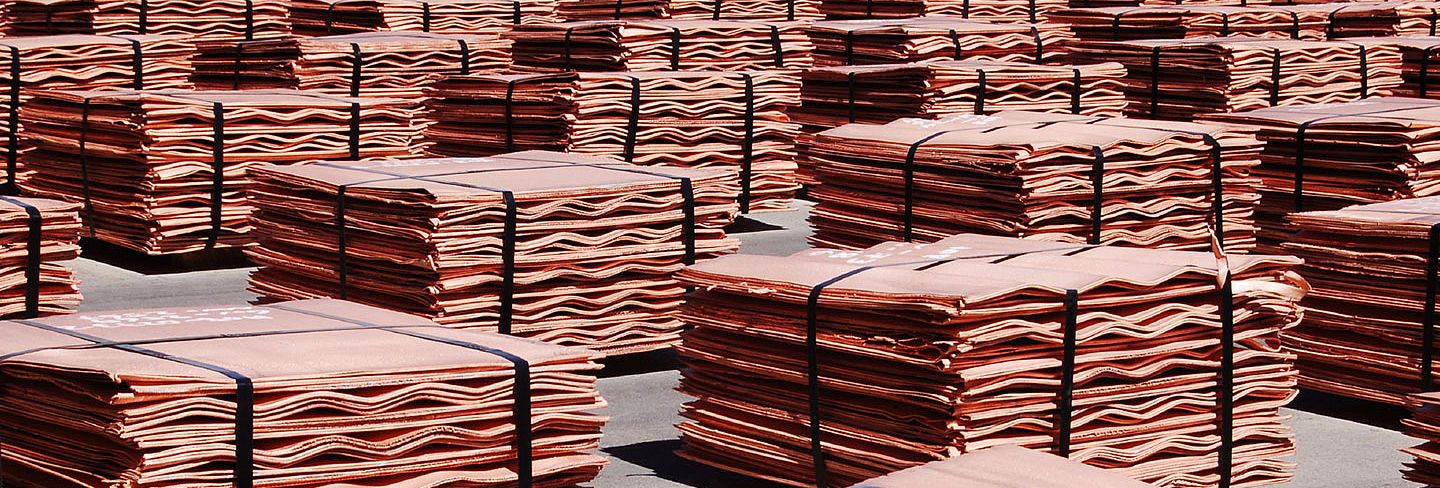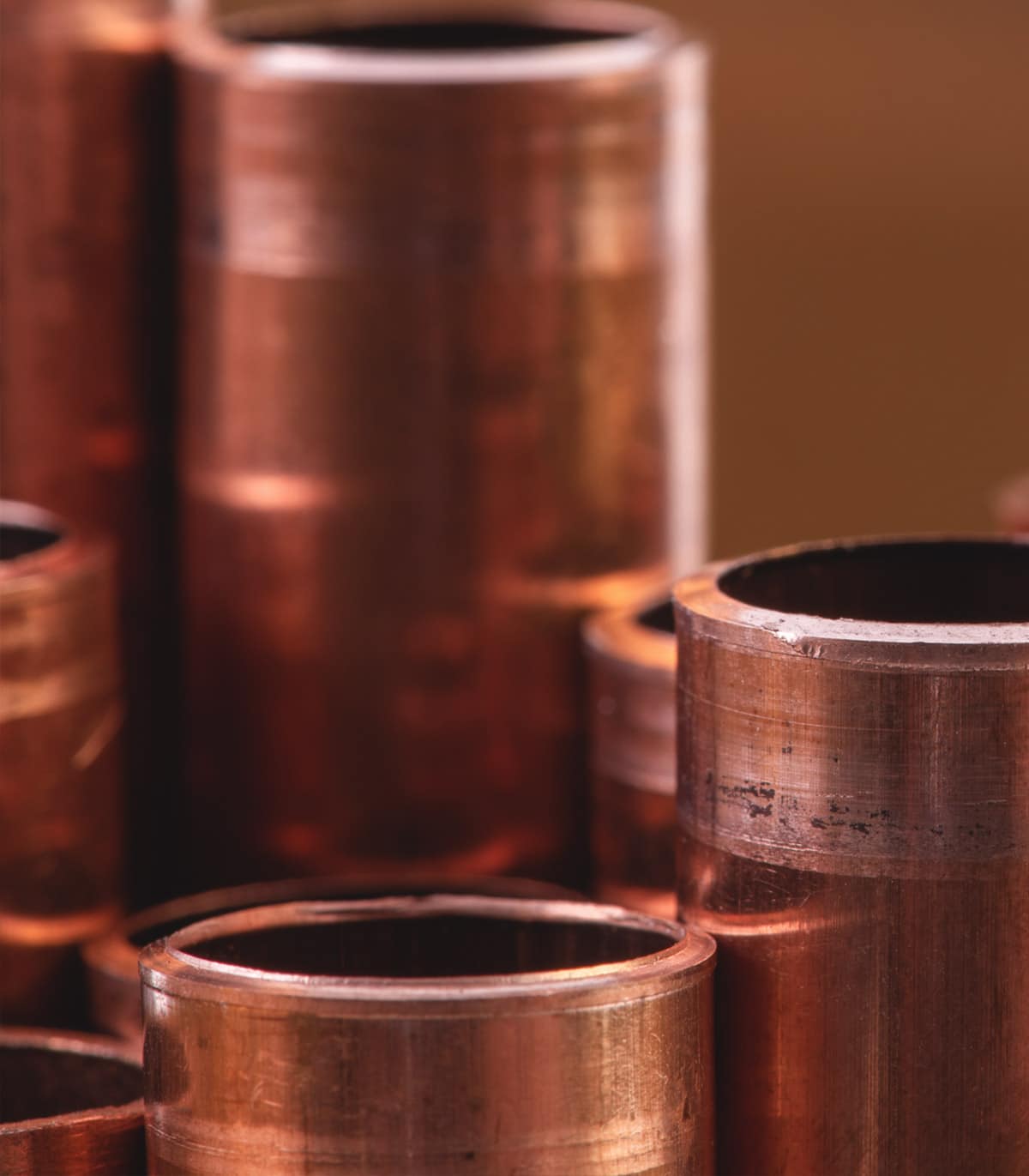Explore the Advantages of Using High-Quality Copper Products for Home and Industry
Explore the Advantages of Using High-Quality Copper Products for Home and Industry
Blog Article
How Copper Products Contribute to Lasting Practices in Numerous Industries
Copper items are significantly acknowledged for their considerable contributions to sustainable techniques throughout multiple sectors, driven by their intrinsic properties such as recyclability, effectiveness, and resilience. In renewable resource systems, as an example, copper boosts the functionality of solar and wind technologies, while its application in building and construction decreases waste through durability. Moreover, the material's antimicrobial features supply appealing advantages in health care settings. As industries seek to adopt even more sustainable techniques, the duty of copper could verify crucial in achieving environmental objectives. What effects might this have for future developments in sustainability?
Copper in Renewable Resource
Copper plays a vital duty in the innovation of renewable power modern technologies, acting as a crucial conductor in various applications. Its remarkable electric conductivity and resistance to corrosion make it an optimal product for electric circuitry, which is important in photovoltaic panels, wind generators, and power storage systems. In solar photovoltaic or pv systems, copper is utilized in the affiliations and wiring, making it possible for efficient power conversion from sunshine to electricity.
In wind power, copper is integral to the generators and transformers that convert kinetic power into electric power, guaranteeing optimal efficiency and dependability. The need for electrical automobiles (EVs) is enhancing, with copper being an essential element in batteries, motors, and billing infrastructure. The shift to EVs considerably improves the need for copper, as these vehicles typically use four times a lot more copper than conventional interior combustion engine lorries.
As the world looks for to reduce environment modification and transition to sustainable energy sources, copper's duty becomes increasingly vital. The material not just improves the effectiveness and toughness of renewable energy systems but also supports the broader objective of decreasing greenhouse gas discharges and promoting a sustainable future.
Eco-Friendly Building And Construction Materials
Over the last few years, there has been a noteworthy shift in the direction of the adoption of green building materials in response to growing environmental concerns. This change is motivated by the requirement for sustainable choices that lessen eco-friendly footprints while keeping structural honesty and aesthetic allure.
Copper, understood for its sturdiness and recyclability, has actually become a key gamer in this industry. It can be made use of in roof, pipes, and electric systems, adding to power performance and minimizing waste. Copper's durability means less replacements gradually, additional enhancing its sustainability profile.
In addition, products such as bamboo, redeemed wood, and recycled steel are obtaining appeal. These alternatives not only use reduced ecological effect but also promote resource conservation. As building codes significantly stress sustainability, contractors and designers are incorporating these materials right into their tasks, promoting technology in layout.
The enhancing adoption of eco-friendly construction products shows a wider dedication to sustainability in the constructed environment. By focusing on these products, the building sector can significantly minimize its carbon footprint, line up with governing requirements, and support a much healthier environment for future generations. This pattern notes a critical action in the direction of a more sustainable future in construction.
Copper's Duty in Healthcare
Current research studies have actually highlighted the considerable duty of copper in medical care settings, specifically due to its antimicrobial residential properties. Copper surface areas have actually been revealed to decrease the presence of pathogens, consisting of infections and germs, by up to 99.9% within a short period. This amazing efficiency makes copper an important product for high-touch surfaces in health centers, such as doorknobs, bed rails, and IV poles, consequently adding to improved infection control procedures.
In enhancement to its direct antimicrobial impacts, copper likewise plays a function in the more comprehensive context of health center sustainability (Copper Products). By incorporating copper right into medical devices and furnishings, healthcare facilities can decrease the occurrence of healthcare-associated infections (HAIs), which not just boosts patient end results but additionally lowers the expenses connected with extended hospital stays and added therapies
In addition, copper's sturdiness and recyclability straighten with sustainable techniques, enabling accountable source administration. As healthcare systems progressively prioritize both patient security and environmental stewardship, the integration of copper products is ending up being much more prevalent. This twin benefit emphasizes copper's crucial payment to a much healthier, safer, and much more sustainable medical care atmosphere.
Sustainability in Transport

In addition, copper's sturdiness and deterioration resistance add to the durability of transport infrastructure (Copper Products). In rail systems, for circumstances, copper parts enhance the integrity and click here for more effectiveness of signaling and power systems, essential for minimizing hold-ups and energy usage. Additionally, copper's role in sustainable power systems, such as solar and wind, sustains lasting transport options by supplying clean power for electric transit choices
Investments in copper technology not only foster sustainability yet also promote economic growth and work creation in eco-friendly fields. As industries strive to fulfill strict ecological guidelines, the application of copper items in transportation becomes a critical strategy in attaining sustainability goals and promoting a cleaner, a lot more efficient future.
Copper and Circular Economy
As the globe increasingly embraces sustainability, the role of copper in the circular economy becomes ever before much more considerable. Copper's intrinsic properties-- such as its toughness, conductivity, and recyclability-- position it as a crucial product in a resource-efficient economy. The circular economic situation aims to lessen waste and optimize resource use via recycling and reusing products, and copper master this respect.
The metal can be recycled forever without loss of quality, making it a perfect prospect for lasting techniques throughout various sectors, including building, electronics, and eco-friendly energy. By reprocessing and recouping copper from end-of-life items, sectors can substantially minimize the demand for virgin products, consequently lowering ecological impacts connected with mining and processing.
Moreover, the combination of copper into circular economic situation frameworks not just saves resources however also fosters development. Businesses that prioritize copper recycling add to a much more lasting supply chain, enhancing their competition while lining up with regulatory demands and customer choices for eco accountable items.
Verdict
Finally, copper items significantly add to sustainable Read More Here methods across multiple fields. Their important function in improving renewable energy innovations, advertising environment-friendly building and construction products, sustaining infection control in medical care, helping with lasting transportation, and symbolizing the principles of a round economic situation underscores the flexibility and value of copper. By integrating copper into different applications, industries can accomplish better efficiency, decrease ecological impact, and align with worldwide sustainability goals, eventually promoting a much more sustainable future.

Copper's excellent conductivity makes it a recommended material in electric car (EV) systems, boosting energy efficiency and efficiency. In addition, copper's function in eco-friendly energy systems, such as solar and wind, supports sustainable transportation solutions by giving clean energy for electric transit alternatives.
Their essential duty in enhancing sustainable energy technologies, promoting environment-friendly construction materials, sustaining infection control in medical care, facilitating lasting transportation, and embodying the principles of a circular economic situation emphasizes the flexibility and relevance of copper.
Report this page